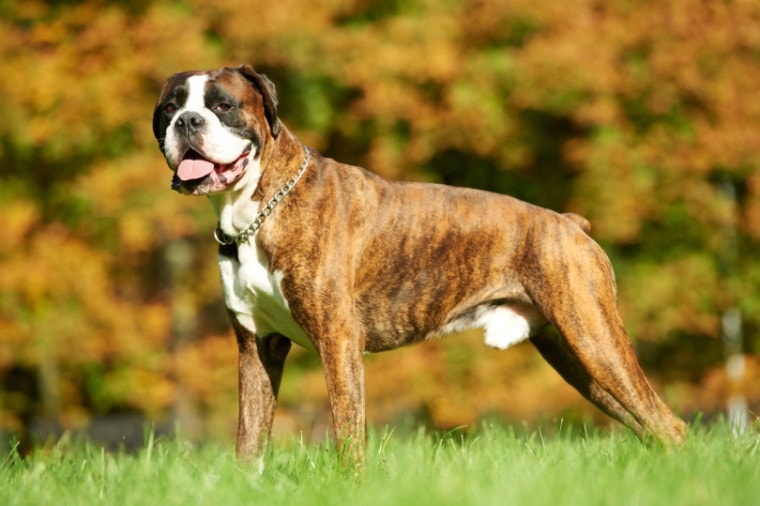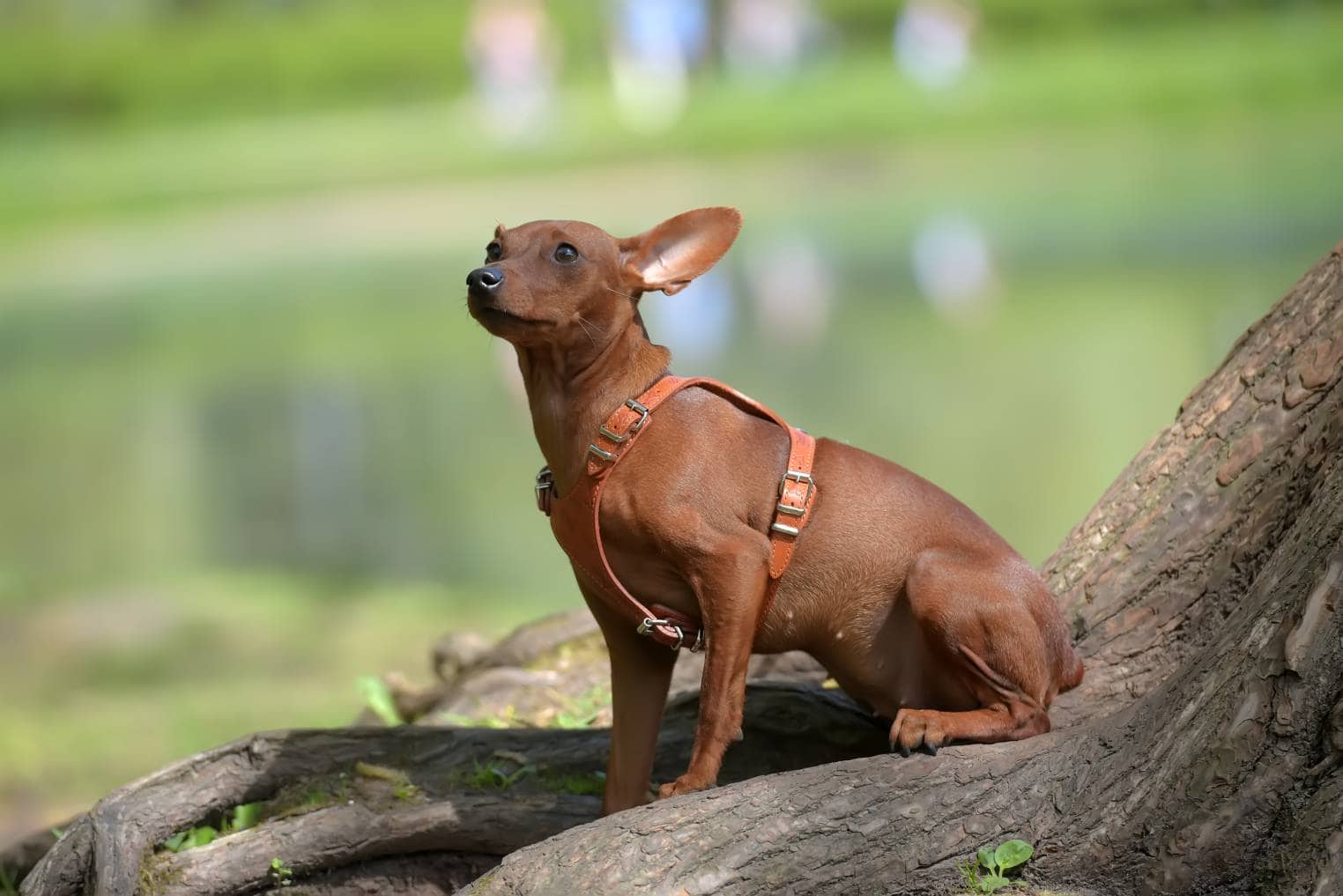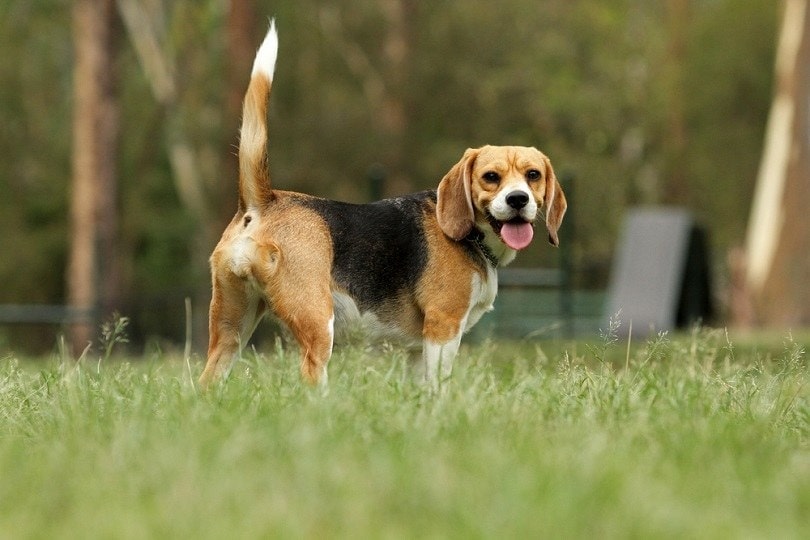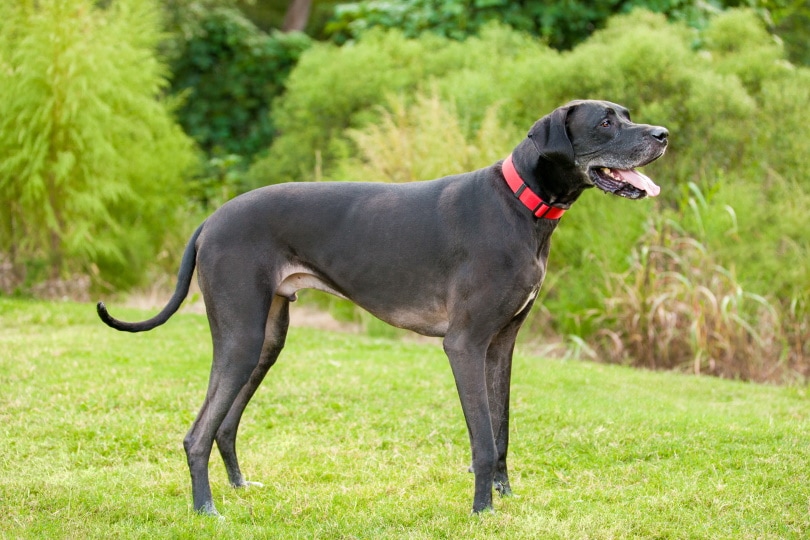
One of the most joyous moments in life is bringing home a new dog, regardless of age and breed. Puppies are usually the most popular choice for families looking for a family pet, excited to watch their new bundle of joy grow and bond with everyone. But things can quickly become chaos when the mixed-breed puppy your family adopted doesn’t stop growing. When should you expect your puppy to stop growing? Let’s take a look at puppy growth and how to guesstimate when your dog will stop growing:
When Do Dogs Generally Stop Growing?
Although there are a lot of different factors that influence growth rate, most dogs are generally done growing at around two years of age. Puppies and young adult dogs go through multiple growth changes, from the time they’re born to around 24 months of age. At first, growing puppies and young adult dogs need nutrient-rich diets to support their changing bodies. They can move to adult-formulated dog food once they’re fully mature.

Dog Growth and Size: Do Different Breeds Grow Faster?
While there’s a general growth timeline for dogs, the dog’s size will also determine how fast it will grow. Great Danes grow slower than Chihuahuas, for instance, so it’s important to consider things like breed and weight category. Even though most dogs are done growing by two years of age, some breeds reach maturity faster than others.
Having a purebred dog will make it considerably easier to guesstimate your dog’s eventual growth rate, but mixed-breed dogs are an entirely different matter. Still, once your puppy reaches around 5 to 6 months, you can get a better idea. For instance, a puppy 2 months of age weighing around 15–16 pounds will most likely be a large or giant-sized dog.
1. Toy-Sized Dog Growth Rate (Less than 15 lbs)

The smallest of the weight groups, toy dog breeds and dogs in this weight group grow the fastest. Toy dogs typically weigh around 2–5 ounces at birth, the same weight as half of an avocado. By the time they’re 6–8 months of age, most toy-sized dogs will stop growing and be fully mature by one year. The smaller the dog, the quicker they reach adulthood.
2. Small-Sized Dog Growth Rate (Less than 25 lbs)

Small-sized dogs like miniature poodles and beagles don’t grow as fast as toy-sized dogs but still mature quicker than bigger dogs. At birth, small breeds are around 6–12 ounces. Small dogs can mature as quickly as 7–12 months, but dogs closer to the medium category can take up to 12–16 months to reach adulthood.
3. Medium-Sized Dog Growth Rate (Less than 50 lbs)

Many dogs fall into the medium-sized weight category, which can vary slightly with growth rates. The average medium-sized dog weighs around 12 ounces to around 1 pound at birth, growing slower than small dogs. They tend to reach adulthood and stop growing at around 16–18 months, though some larger medium dogs will take up to 2 years to fully mature.
4. Medium-Large Sized Dog Growth Rate (Less than 75 lbs)

Both medium and large, many popular breeds fall into this weight category. Medium-large dogs are usually around 14 ounces to 1 pound at birth, though some bigger breeds may be up to 2 pounds at birth. Dogs in this weight category usually take 18–20 months to mature, with larger dogs taking a full 24 months to enter adulthood.
5. Large-Sized Dog Growth Rate (Less than 100lbs)

Large dogs have the second slowest growth rate, though many popular breeds like Labradors fall into this weight group. Dogs in the large-sized weight category usually weigh between 14 ounces to 1 pound at birth. By the time they reach 6 months, they’ll be heavier than a medium-sized dog at full maturity. Large dogs take around 18–20 months to mature, with near-giant breeds taking longer.
6. Giant-Sized Dog Growth Rate (Over 95 lbs)

The largest of the breeds, also known as the Giant weight group, these dogs take the longest to stop growing and reach full maturity. Giant-sized dogs are typically 14 ounces–1¾ pounds at birth, though the breeds at the top of the weight range may weigh more. These massive canines normally take the longest to mature, typically around 20–24 months or even longer.
Conclusion
Puppies are continuously growing, but some dogs grow at a much slower rate than others. There are many reasons why a puppy may continue to grow, especially if it’s a large or giant-sized breed. While you may not know exactly when your puppy will reach full maturity, there are some ways to guesstimate. For puppies that are purebred dogs, it will be easier to know. As for puppies that come from a shelter or rescue, it’ll be much harder to discern. Thankfully, a vet visit may help narrow it down a bit and give you some clarity.
Featured Image Credit: Dmitry Kalinovsky, Shutterstock







